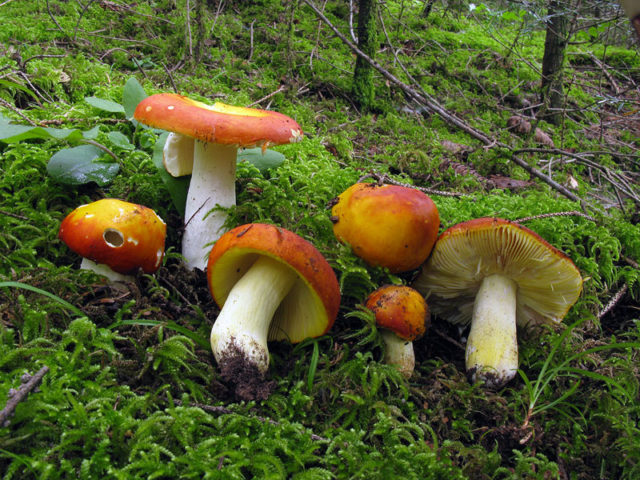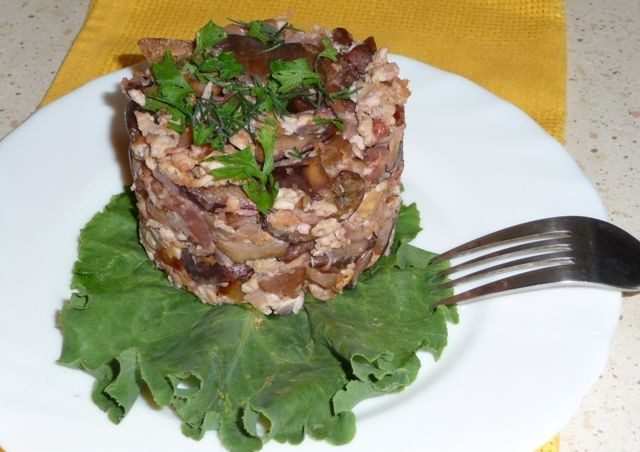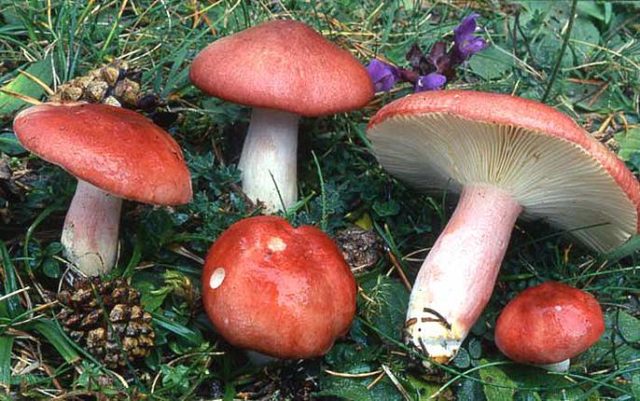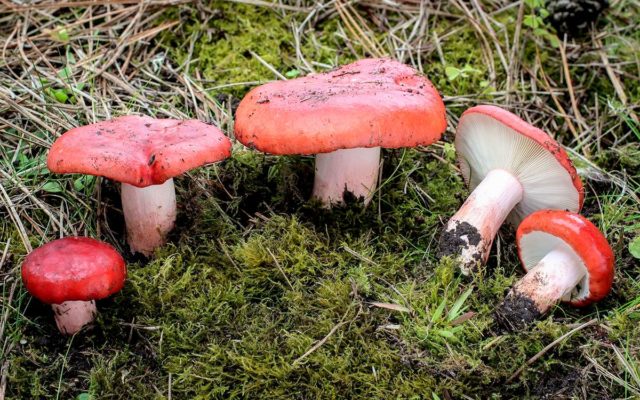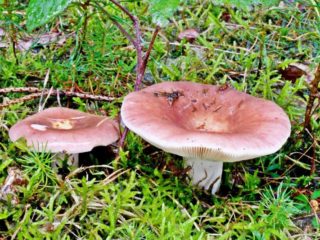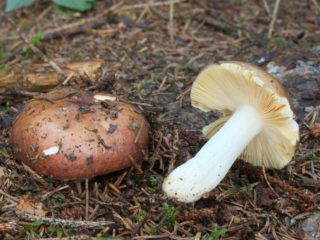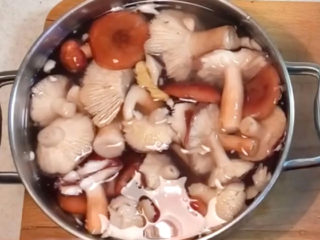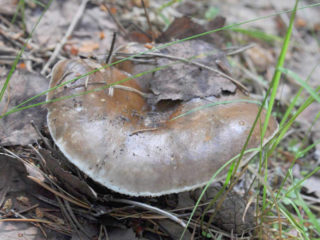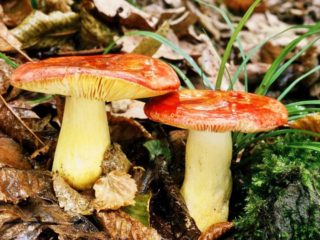Content
Golden Russula is a representative of the genus Russula (Rusula) of the Russula family. This is a rather rare mushroom species, which is not often found in Russian forests, but is common in deciduous and broad-leaved forests of Eurasia and North America.
Where do golden russulas grow?
The mushroom grows in deciduous forests, but it can also be found in coniferous forests and in mixed plantings, mainly at the edge of the forest. It grows well on ordinary forest soil; single specimens and small families are more common. Golden russula appears at the beginning of summer and is collected until the first autumn frosts.
The mushroom is rare in Russia, but is found in the south of the Krasnoyarsk Territory, more often it can be found in the Far East and very rarely in the European part of the country. Distributed in birch-coniferous forests of Western Siberia.
What do golden russulas look like?
This is a large-fruited, beautiful mushroom with a brightly colored cap. Its color can be dark orange, light golden, brick and even red. The lower part of the mushroom (stalk) is wide, cylindrical, white
Description of golden russula
Golden russula (Russula aurata) has a large, strong, even, outstretched cap. Its diameter can reach 12 cm. In old mushrooms, the shape of the cap forms a saucer with raised edges. Its central part becomes light, golden, the edges are darker. The color can be brick red, orange, the middle is yellow, golden. The edge of the cap is ribbed and ribbed.
The leg is thick, often straight, but may be slightly curved. It is cylindrical, grayish-white, pale yellow below. Its diameter reaches 3 cm. The height of the stem can vary from 3 to 8 cm. The surface can be smooth or covered with a network of shallow wrinkles; in old mushrooms the surface becomes loose.
The pulp is fragile, brittle, crumbling, and has no odor. After cutting the mushroom, its color on the sections does not change. Under the skin, the color of the flesh is pale yellow.
The plates are frequent, rounded at the edges, and not attached to the stem. Their length can vary from 6 to 10 cm. In young mushrooms, the color of the plates is creamy, and over time begins to turn yellow.
The spores are ovoid, white, covered with small frequent tubercles, forming a mesh. White spore powder.
Is it possible to eat golden russula?
The collection begins at the end of June and ends with the arrival of October. You can often find a mushroom at the foot of an oak tree in a heap of its leaves. The golden representative of the Russula family can be safely placed in a mushroom basket and eaten in any form: salted, pickled, fried or boiled. But, despite the telling name of the mushroom, it is not recommended to eat it raw.
Taste qualities of golden russula
Golden russula is an edible mushroom species and has a good taste. The pulp is slightly sweet, bitterness is completely absent. There is no characteristic mushroom smell.
Benefits and harms
Golden russula is eaten as a natural substitute for animal protein and meat. It contains vitamins B2 and PP and is completely free of fat. It is also a low-calorie product that can be safely eaten by people who control their weight.
Golden russula is similar to some types of inedible and conditionally edible mushrooms, so it should be collected very carefully. Despite its name, the mushroom is not eaten fresh, as this can lead to unpredictable consequences.
Doctors do not recommend that people with pancreatic diseases eat mushrooms, including russula. They are also prohibited for children under 12 years of age.
The composition, like other edible mushrooms, contains the protein chitin, which puts a serious burden on the human digestive system.One mushroom serving for an adult should not exceed 150 g, this makes it easier for the digestive system to digest a heavy product.
False doubles of golden russula
An inexperienced mushroom picker may confuse golden russula with beautiful russula. The color of their caps and the shape of the legs are almost the same. The beautiful russula has a redder, darker or light pink cap. The leg is also colored a light light pink. The flesh of the entire mushroom body is hard and does not crumble after cutting. This species also has a pronounced fruity odor, and when cooked it begins to smell like turpentine. This mushroom belongs to the conditionally edible group, as it does not have good taste, and after processing it emits an unpleasant odor.
Blood-red russula is another inedible member of the family that looks similar to golden russula. The inedible mushroom has a much darker cap and a distinct red or pink color. The leg is pale pink, and the golden russula is yellowish. The mushroom is classified as a conditionally edible species, as it has an unpleasant bitter taste and causes mild gastrointestinal disorders.
Use of golden russula
This type of mushroom is widely used in cooking. They are used to prepare roasts, side dishes, marinate, salt, and dry for future use.
Before cooking, it is recommended to pour boiling water over the mushroom to make the flesh more elastic and maintain its shape, especially if it will be pickled or rolled into jars. Russulas stewed in sour cream sauce are delicious. You can use them to make fillings for pies and pizza. Salted russula can be eaten the next day.They can also be rolled into jars and stored for the winter.
There is another way to prepare for future use - drying. Each russula is washed, dried and strung on threads, then hung in a dry, warm room. Thus, the mushroom gradually wrinkles and dries out, but at the same time retains all its taste qualities and even enhances them. Subsequently, you can cook delicious mushroom broths and soups from such a preparation.
The process of preparing golden russula does not take much time: just boil it once for half an hour and add it to any dish. Before cooking, it is recommended to soak the golden russula in water and leave it overnight or keep it in the liquid for a couple of hours.
Conclusion
Golden russula is a large, beautiful mushroom that can be collected and eaten without fear. On the territory of Russia it is a rather rare representative of the Russula family, but in some regions it grows in sufficient quantities. Prefers deciduous and mixed forests in the northern part of the country. It is quite versatile, has a good taste, and can be used to prepare any mushroom dishes. During the collection process, it is important not to confuse golden russula with its inedible counterparts, which cause food poisoning.

